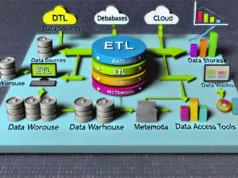In the realm of Android, two versions that made significant waves were Android 4.0 Ice Cream Sandwich (ICS) and Android 4.1 Jelly Bean (JB). Both brought unique features and improvements to the table, but how do they stack up against each other? Let’s dive deep into their differences and similarities.
1. Speed and Performance
Jelly Bean is not a drastic departure from ICS in terms of its core architecture. However, Google focused on three primary areas for JB: speed and overall performance (Project Butter), delightful improvements for essential Android apps, and a complete overhaul of the Google search app.
1.1 User Interface: Smooth as Butter
From the outset, you’ll notice that Jelly Bean operates more smoothly and swiftly than Ice Cream Sandwich. This enhanced performance is attributed to Jelly Bean’s Project Butter, which ensures graphics run at 60fps consistently, a 60Hz screen refresh rate, and triple buffering support. These enhancements make JB more responsive and generally faster in transitioning to UI elements, loading apps, and delivering results.
2. Aesthetics and Functionality
2.1 Contacts
In Jelly Bean, users can add high-resolution pictures for their contacts, which can be sourced directly from their Google+ profiles.
2.2 Messaging
While the keyboard in the messaging app remains largely unchanged in appearance between ICS and JB, Jelly Bean boasts several improvements, including an enhanced dictionary and better predictive text support. Additionally, the voice-based dictation feature in JB now works offline.
2.3 Notifications
The notifications drawer in Jelly Bean has received a significant upgrade in both aesthetics and functionality. It offers a more spacious UI and allows users to perform various tasks directly from the notification shade.
2.4 Settings, Apps, Accounts, and Developer Mode
The settings menu in Jelly Bean has been tweaked to offer more functionality. For instance, users can customize which notifications to receive directly from the apps submenu. The developer options in JB come with an on/off switch, unlike ICS where they are enabled by default.
3. Search Capabilities
3.1 New Search
Google overhauled its search app in Jelly Bean. The search bar in JB has a more distinctive color, making it more prominent on the home screen. The Knowledge Graph, combined with user data, allows Google to offer faster and more visually appealing search results in the form of cards.
3.2 Google Now
Google Now in Jelly Bean offers improved functionality, providing personalized results for daily activities such as commuting, weather updates, calendar appointments, and more.
3.3 Voice Assistant
The voice-based assistant in Jelly Bean is a marked improvement over the voice search feature in ICS. It’s more responsive and can provide voice-based answers to user queries.
4. App Enhancements
4.1 YouTube
The YouTube app in Jelly Bean has been revamped to offer a better, more touch-friendly UI. The design is characterized by larger buttons, video thumbnail images, and the absence of unnecessary video details.
4.2 Camera
The camera app in Jelly Bean allows users to take and access pictures faster than in ICS. The gallery in JB is just a swipe away, enabling users to view their pictures directly from the camera mode.
Conclusion
After a thorough comparison, it’s evident that Jelly Bean offers a smoother, faster, and more refined experience than Ice Cream Sandwich. With numerous UI perks and enhanced features, Jelly Bean stands out as the superior choice for Android enthusiasts. Whether it’s the buttery smooth performance, revamped apps, or the advanced search capabilities, Android 4.1 Jelly Bean brings a plethora of improvements that make it a must-have for Android users.


















